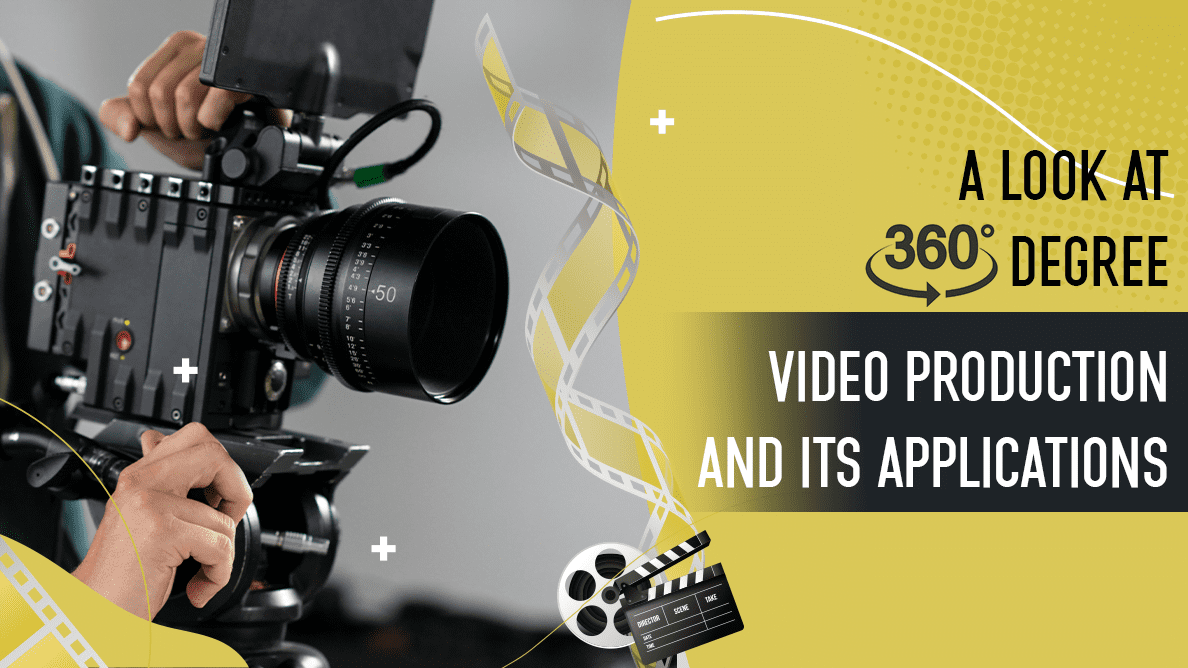Title: A Look at 360-Degree Video Production and Its Applications
Introduction:
In the dynamic realm of visual storytelling, the evolution of technology continually pushes the boundaries of creativity. One such innovation that has revolutionized the way we experience video content is 360-degree video production. Unlike traditional video formats, 360-degree videos immerse viewers in a fully panoramic and interactive environment. In this exploration, we delve into the world of 360-degree video production, examining its techniques, applications, and the transformative impact it has on the way we consume visual content.
Understanding 360-Degree Video Production:
360-degree video production is a filmmaking technique that captures a spherical view of the surroundings, allowing viewers to navigate and explore the scene in all directions. Unlike traditional video, which offers a fixed perspective, 360-degree videos provide an immersive experience where viewers can control their viewpoint, often using a mouse, touchpad, or virtual reality (VR) headset.
The production process involves the use of specialized cameras equipped with multiple lenses to capture a complete field of view. These cameras are strategically positioned to cover the entire spherical space, capturing visuals in all directions simultaneously. Post-production stitching techniques are then applied to seamlessly blend the multiple footage streams into a cohesive 360-degree video.
Applications of 360-Degree Video Production:
Virtual Tours and Travel Experiences:
One of the primary applications of 360-degree video production is in virtual tours and travel experiences. Viewers can explore iconic landmarks, exotic destinations, and cultural sites from the comfort of their homes. Travel agencies, museums, and tourism boards use 360-degree videos to offer immersive previews of destinations, enticing potential visitors with a taste of the experience.
360-Degree Storytelling:
Filmmakers and content creators leverage 360-degree video production to craft immersive narratives that transcend traditional storytelling. Viewers become active participants, able to explore different angles and perspectives within the story. This dynamic engagement creates a more personalized and interactive viewing experience.
Live Events and Concerts:
360-degree video production has found a natural fit in live events and concerts. By placing 360-degree cameras in strategic locations, audiences can virtually attend events as if they were present in the venue. This application enhances accessibility for viewers who may be unable to attend physically, bringing the energy and atmosphere of live events to a global audience.
Educational Content:
In education, 360-degree videos provide an immersive learning experience. Whether it’s exploring historical sites, conducting virtual science experiments, or taking a journey through the human body, educators use 360-degree videos to engage students and enhance the learning process. The format offers a more experiential and memorable way to convey information.
Real Estate and Property Tours:
The real estate industry has embraced 360-degree video production to offer virtual property tours. Potential buyers can explore every room and corner of a property, gaining a comprehensive understanding of the space without physically visiting it. This application enhances the marketing of properties and saves time for both buyers and sellers.
Training Simulations:
Industries such as healthcare, aviation, and emergency services utilize 360-degree videos for training simulations. These immersive scenarios allow professionals to practice and refine their skills in realistic environments without the need for physical equipment or locations. The hands-on experience enhances training efficacy and safety.
360-Degree Marketing Campaigns:
Marketing campaigns benefit from the immersive nature of 360-degree videos. Brands use this format to create interactive and engaging advertisements, giving viewers a unique perspective on products or services. This approach can significantly enhance user engagement and brand awareness.
Technological Advancements and Challenges:
The growing popularity of 360-degree video production has been facilitated by advancements in both capture technology and viewer accessibility. High-quality cameras designed for 360-degree filming have become more affordable, and platforms like YouTube and Facebook support the seamless integration of 360-degree videos.
However, challenges persist, including the need for robust post-production processes to stitch together multiple video streams seamlessly. Additionally, creating compelling narratives in a 360-degree format requires a shift in storytelling techniques, as filmmakers must consider the viewer’s ability to choose where to direct their attention.
The Future of 360-Degree Video Production:
As technology continues to evolve, the future of 360-degree video production holds exciting possibilities and innovations.
Enhanced Interactivity with VR:
Virtual Reality (VR) headsets are increasingly integrated with 360-degree video experiences, providing a more immersive and interactive viewing environment. This convergence allows viewers to explore virtual worlds with a heightened sense of presence, making the experience even more engaging.
AI-Driven Personalization:
Artificial intelligence (AI) may play a role in tailoring 360-degree video content to individual preferences. By analyzing user interactions and preferences, AI algorithms could dynamically adjust the content to align with the viewer’s interests, creating a more personalized and immersive experience.
Improved Livestreaming Capabilities:
Livestreaming in 360 degrees is poised to become more prevalent. This development could revolutionize how we experience live events, enabling viewers to feel as though they are part of the action in real-time. Enhanced livestreaming capabilities would have implications for sports events, concerts, and other live performances.
Collaborative Storytelling:
Future developments may facilitate collaborative storytelling within the 360-degree video format. Multiple users could interact within the same virtual space, contributing to a shared narrative experience. This could be especially impactful in educational settings and collaborative projects.
Conclusion:
360-degree video production has emerged as a powerful tool for storytellers and content creators, offering audiences an immersive and interactive viewing experience. From virtual tours to educational content and live events, the applications of 360-degree videos are diverse and continually expanding.
As technology advances and creative minds push the boundaries of what is possible, the future of 360-degree video production holds the promise of even more captivating and personalized experiences. With innovations in virtual reality, artificial intelligence, and collaborative storytelling, the 360-degree format is set to play an increasingly integral role in the evolving landscape of visual storytelling.


